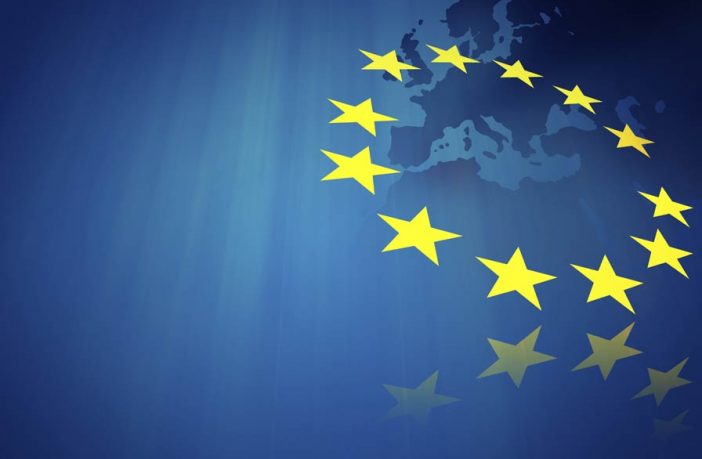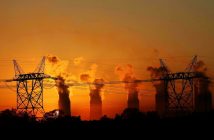- Europe is at the forefront of the shift to net zero, both in ambition, but also in terms of how to make rapid and deep decarbonisation a reality.
- The world needs to reduce carbon dioxide (CO2) emissions as quickly as possible. Not doing so means we will need to turn to expensive and unproven technologies to withdraw CO2 from the atmosphere later this century.
- There’s some recognition of this in the increasing ambition in emissions reduction targets for 2030. By targeting a 55% emissions reduction on 1990 levels by 2030 the EU could save as much as 8 BtCO2 of cumulative emissions.
- Getting towards meeting those targets in the next nine years is a huge undertaking.
Long-term targets are admirable, but the meaningful policy measures and a sector-by-sector roadmap set out today gives investors the incentive to start building projects, and consumers the nudge needed to start changing their behaviour.
Today, the EU recognised the great progress the power sector has made. Emissions there have fallen by well over 50% since their peak in the EU as the contribution of renewables has grown. And Brussels has also broadened the decarbonisation conversation, looking at how best to drive the rapid decarbonisation of industry, buildings and transport.
The roadmap unveiled today acknowledges the critical role electricity will play. Everything that can be electrified, should be electrified.
But there are some sectors that don’t lend themselves to electrification, and that is why Brussels is choosing to promote low-carbon hydrogen, carbon capture and storage and biofuels, as well as pushing for greater improvements in energy efficiency.
The proposals to strengthen carbon pricing are welcome and will hopefully be set at levels where they begin to incentivise industrial decarbonisation, from technologies like high temperature heat pumps or carbon capture.
Reforming the carbon market will be critical, especially for the hard-to-decarbonise industrial sectors, such as cement and steel. Though the EU Emissions Trading System (ETS) covers sectors that generate half of the bloc’s emissions – power, industry and aviation – these sectors will only deliver a third of the cuts needed by 2030.
The 2030 target poses major challenges for the energy industry, but it also presents great opportunities. Vast amounts of capital, private and public, are primed to invest in decarbonisation.
The traditional downstream sector is challenged in many ways, as the accelerated electrification of the vehicle fleet and extension of the ETS scheme to the aviation and maritime sectors will reduce demand for its products.
With refining remaining under the ETS scheme, it avoids any protection offered by a carbon border adjustment mechanism, so the sector is disadvantaged relative to international imports. However, the incentive to decarbonise existing operations is now much stronger along with the need to diversify business models to supply the growing demand for low carbon fuels.
The largest opportunities centre on the build-out of wind, solar and storage capacity necessary for the 2030 target to become a reality.
Europe must rapidly shift from being a power market where centrally dispatched supply follows demand to one where demand can respond to an increasingly variable, weather-driven supply from renewable sources.
The current NECP’s target 53% of electricity supply coming from renewable sources across Europe. The new target will require 65% of electricity supply to come from renewables by 2030.
According to Wood Mackenzie data we would need 472 GW of additional wind and solar across the European power system by 2030 to secure this new renewables target. Spread over nine years – that’s 52 GW of wind and solar additions per year. Over the last decade Europe has averaged a build rate of 20 GW per annum. So we need a 160% ramp-up on average wind and solar annual build rates to achieve the new target.
Is this achievable? Optimistically, of course it is. There is great appetite to ramp-up wind and solar build out across the continent. Capital has found a new home, and it’s green.
But it’s going to be unnecessarily challenging unless further policy and regulation changes are made. The planning, connection and permitting process will need to be streamlined, distribution networks investment will need to be in place and regulators will need to adopt a new net zero mindset. On top of this, system flexibility build out will need to be supported, and market reforms will need to be in place to ensure it is fit for operating in a zero marginal cost producers’ environment.
In our 2-degree scenario, which is broadly consistent with the EU’s medium and long-term targets, we assume that drastic measures need to be taken this decade.
The policy measures in the EU’s Fit for 55 package give more clarity about what the next decade will look like, but it’s certain we’re going to see a very different looking European energy market come 2030.
Authors: Woodmac’s Rory McCarthy, from the power and renewables team, provided comment on the P&R sector; Alan Gelder, who covers refining and chemicals, looked at the transport sector proposals; while Murray Douglas, from Woodmac’s gas team, looked at the implications for gas.
Source: Woodmac











